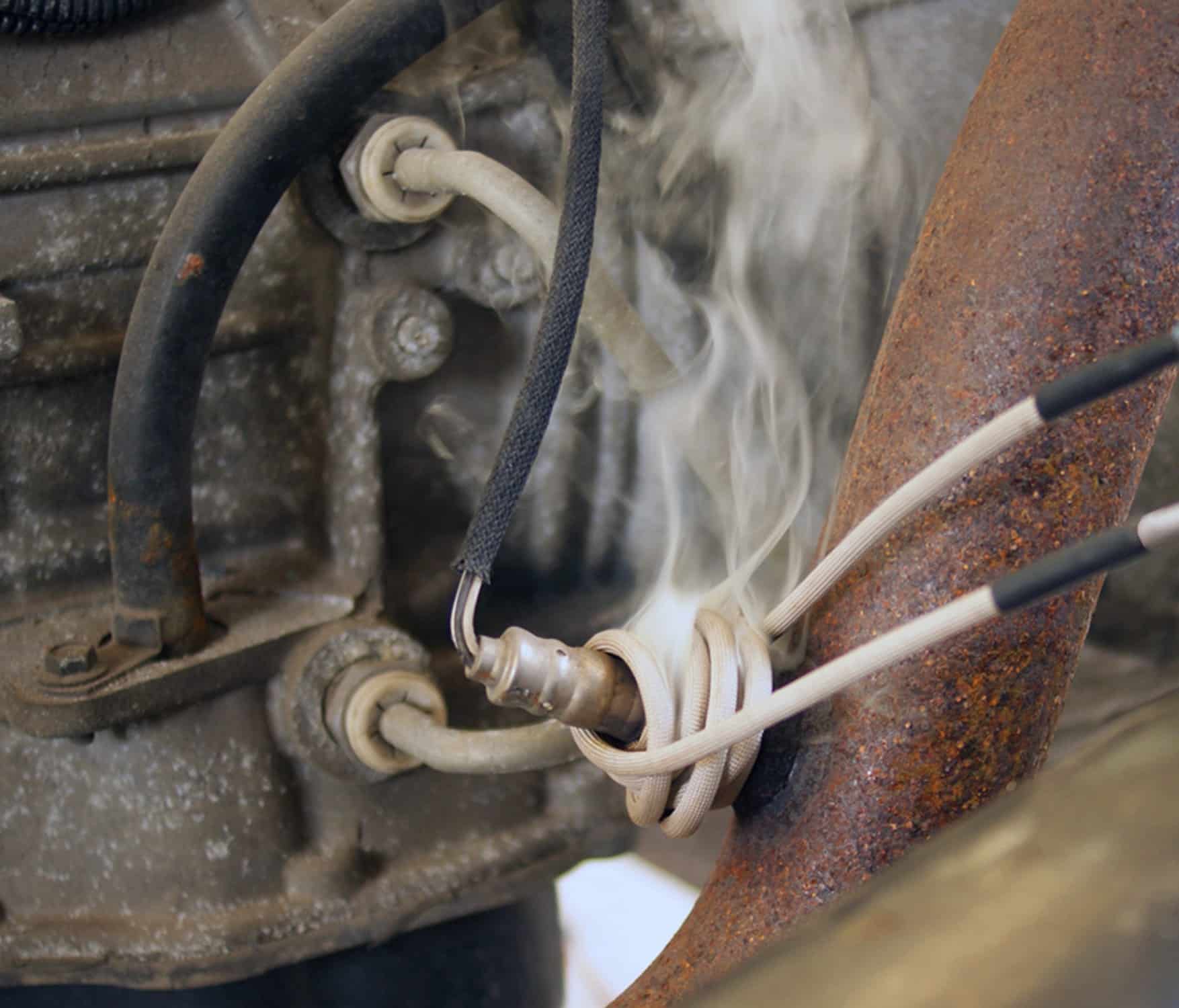Your cart is currently empty!
The Mini-Ductor® Induction Heater uses Invisible Heat® to safely heat the metal sensor body from within, expanding the threads and releasing even rusted O₂ sensors in seconds. No flames. No chemicals. No collateral damage.
Why Induction Heating is the Best Way to Remove O₂ Sensors
When an oxygen sensor seizes its mounting threads, direct heat is the fastest, most reliable way to loosen it.
Unlike a torch, the Mini-Ductor® creates a localized magnetic field that induces heat directly into the sensor’s metal shell. The heat expands the metal from the inside out, breaking rust bonds while keeping the exhaust pipe, wiring, and nearby components cool.
This FlamelessTM precision makes induction heating the best and safest method for removing stuck O₂ sensors.
Recommended Tools and Coils
For O₂ sensor removal, both the Mini-Ductor® Venom® and Mini-Ductor II® models are ideal.
- Pre-Formed Coil: Slides over the O₂ sensor’s hex base for direct, even heat.
- Bearing Buddy® (rope-style) Coil: Wraps tightly around hard-to-reach sensors in tight exhaust spaces.
Each coil heats only the sensor body, not the surrounding exhaust housing, and can typically loosen sensors within 10 to 20 seconds depending on mass and metal type.
Step-by-Step: Removing an O₂ Sensor with the Mini-Ductor®
- Select the bearing buddy that fits wraps around the O₂ sensor’s base.
- Apply induction heat for 10-20 seconds, or until the metal body is uniformly warm.
- Use an oxygen-sensor socket or wrench to loosen the sensor. If it’s still tight, repeat heating once more.
The heat causes the threads to expand microscopically, breaking corrosion, and releasing the sensor with minimal force. Always follow tool safety guidelines and wear gloves, eye protection, and a respirator if smoke is produced from adhesives or coatings.
Troubleshooting Stubborn or Rusted Sensors
For sensors heavily corroded in place, use the Bearing Buddy® coil for a full wrap of heat coverage.
- Allow short, repeated heat cycles rather than continuous heating.
- Do not overheat or let the sensor glow red. This can damage the coil.
- If the sensor is still stuck, apply a small amount of penetrating oil after heating, not before, to wick into the expanded threads.
Safety & Efficiency Advantages
- No Open Flame: Safe to use near fuel lines, wiring, or under-body insulation.
- Faster Turnaround: Sensors release in seconds, no waiting for penetrating oils.
- Lower Costs: Eliminates the need for replacement parts damaged by torch heat.
- Cleaner Work Area: No sparks, soot, or fumes, which is ideal for enclosed shop spaces.
See Mini-Ductor® II in Action
Removing a Stuck 02 Sensor with the Mini-Ductor® II
Watch how Mini-Ductor® II removes an oxygen sensor in under 20 seconds.
Discover the safer, faster way to remove O₂ sensors.
Shop the Mini-Ductor® series or contact our team for coil recommendations specific to your automotive applications

